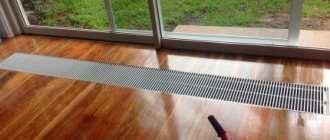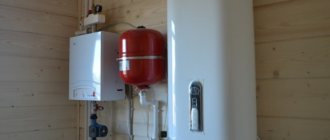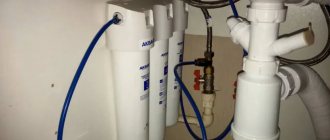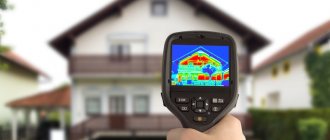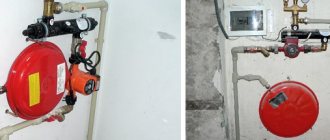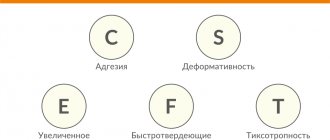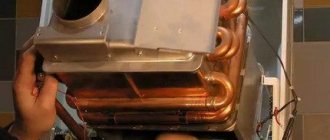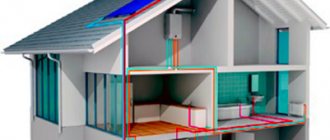When choosing a home heating system, it is important to choose the right devices that quickly and efficiently heat indoor air. Modern electric heating convectors are devices aimed at maintaining a comfortable temperature in a house or apartment.
They greatly facilitate the operation of traditional heating systems, and in certain cases can even replace them completely.
In this material we will talk about the operating principles of convectors, share the secrets of choosing equipment and give a small rating of the best devices according to users.
Operating principle and design of the convector
The operation of the device is based on the process of convection, associated with a well-known physical phenomenon: when heated, the density of the air decreases, as a result of which it expands and rises.
The name convector comes from the Latin convectio - “transfer”. The process consists of constant movement of air flows: cold air settles down, and warm air rises to the ceiling
The design of all types of electric convectors is extremely elementary. The main parts of the device are the housing and the heating unit located in the lower part of the casing.
Cold air enters the holes, which are located at the bottom of the device. When passing next to the heater, the temperature of the air flow increases, due to which it rushes upward, where there are outlet holes made at a slight angle.
In addition to the main elements, modern convector models also have many additional elements (overheating sensor, thermostat) that ensure comfortable operation
Warm gas rises to the ceiling, and then, gradually cooling, is nailed back to the floor, after which the stages of the process are repeated again. The constant movement of the air mass allows you to heat the room efficiently and evenly.
Bimetallic thermostats
A traditional thermostat consists of two parts made of different metals bonded together to form what is called a bimetallic strip (or bimetallic strip). The plate acts as a bridge in the electrical circuit connected to your heating system. Usually the "bridge is not working", the plate passes electricity through the circuit, and the heating is turned on. When the plate heats up, one of the metals expands more than the other, so the whole strip bends very slightly. Eventually it bends so much that it breaks the chain. “The bridge is established,” the electricity instantly turns off, the heating turns off, and the temperature begins to drop.
But what happens next? As it cools, the plate also cools and returns to its original shape. Sooner or later it gets plugged back into the circuit and causes the electricity to flow again and the heating to turn on again. By adjusting the temperature dial, you change the temperature at which the circuit turns on and off. Because the metal strip takes a while to expand and contract, the heat doesn't turn on and off constantly every few seconds, which would be pointless (and quite annoying). For example, when heating your home, depending on how well insulated your home is and how cold it is outside, it may take an hour or more for the thermostat to come back on after it's turned off. And the built-in thermostats in OSHA control cabinet heaters, which serve to maintain the heater temperature in a safe range, can turn on more often.
Strengths and weaknesses of electric convectors
The devices have their advantages and disadvantages. The popularity of such devices is explained by their many advantages:
- Easy to install and operate . The devices do not require special preparation for operation or additional assembly operations. You just need to release the convector from the box and plug in the device.
- High speed of heating the room . The device quickly reaches the required power, since it does not have to waste energy to heat the coolant.
- Durability . Although the warranty service life of convectors from well-known companies is on average 5 years, in practice they can work flawlessly for 10-25 years.
- High efficiency . Electrical devices have the highest efficiency among heating devices. For new generation models this figure can reach up to 98%.
- Mobility. The devices can be easily moved around the apartment, installing them anywhere where there is access to an outlet. There are also models on wheels and options that allow for mounting on walls.
- Affordable price . Prices for electric convectors are quite affordable. In addition, such devices do not require servicing (removing fuel residues, cleaning parts), which also helps to save money.
- Safety . Heating devices do not negatively affect the microclimate of the room: they do not require oxygen to operate and do not dry out the air. The temperature of the outer shell of the devices does not rise above +40-60 °C, so when using them there is no fear of burns.
- Possibility of temperature control . Modern models often have a special heating regulator, thanks to which you can maintain the most comfortable temperature in the room without allowing it to rise excessively.
- Various setting modes . Most convectors are equipped with electronic controls, thanks to which you can set a specific air heating program.
In addition to a large number of advantages, the devices also have some disadvantages. You should know that convectors require a stable supply of electricity to operate. In addition, there should be an outlet within reach, as experts recommend avoiding the use of extension cords.
Such devices consume a fairly large amount of electric current, which can become a problem given the high cost of this resource.
Most convector models operate completely silently. Only some devices may produce slight crackling or clicking noises during operation.
At the same time, the high cost of wasted electricity is to a certain extent offset by the use of a special economical mode, which is provided in many models, as well as by programming the device to turn off at certain hours.
Installation in a private house
The ease of installation of electric convectors allows you to implement this procedure yourself.
Before you make convector heating with your own hands, you need to prepare the following tools:
- Hammer.
- Screwdriver.
- Hammer.
- Level.
A wall-mounted electric convector is installed in the following sequence of operations:
- Assembling the device, during which it is necessary to secure all the brackets to the body.
- Fitting the structure to the wall surface: it must be leveled. During this, marks are made at the location of the brackets.
- The brackets must be removed from the panel and attached one by one to the applied markings. This makes it possible to mark points for drilling holes for fasteners.
- Using a hammer drill, holes are made in the marked places.
- Using a hammer, carefully hammer the dowels into the base.
- To screw the brackets, use a screwdriver or screwdriver.
- The instrument panel is hung on well-fixed brackets.
- To start operating the convector, it must be connected to the network.
When using electrical appliances, it is important to understand that such convector heating of the house will significantly increase the load on the network, so you should calculate in advance whether the old wiring will withstand this. To ensure heating safety, it is recommended to equip devices of this type with separate cable lines. https://www.youtube.com/embed/WZnvggq6oWI
What to look for when choosing a device?
The problem of how to choose the best electric heating convector is quite acute, since dozens of similar models are presented in specialized stores. The following technical characteristics are particularly important.
Heating element type
Convectors use various types of heating devices. The main ones include tubular, needle-shaped and monolithic.
Acicular . The heating element of devices of this class is a thin plate made of dielectric with a chrome-nickel heating wire placed on it. For insulation, the metal thread, forming loops on both sides, is varnished on top.
Designs with such a device are low in cost, but are not very reliable, since the chromium-nickel element is characterized by instantaneous rapid heating and cooling. In addition, the type of insulation provided does not guarantee good protection against water splashes, which is why these devices are not recommended for use in bathrooms.
Tubular heating element (TEN). The most common models are characterized by the use of a steel tube, surrounded by a nichrome thread surrounded by a heat-conducting insulating material. Aluminum fins located on the heating element enhance convection, providing efficient heat transfer.
The heating element can be open or closed. Protected heating elements are more durable and durable, they are well suited for use in wet areas
Convectors with heating elements have better technical characteristics than their needle counterparts: the former are less subject to heating, which makes them durable.
Many devices have effective moisture protection, which allows them to be used in bathrooms. The disadvantages include crackling, which can occur due to different rates of thermal expansion of parts made from different types of metals.
Monolithic heating element. Blocks of a new generation, the action of which is determined by the heating of a solid cast base. Thanks to this detail, the devices are characterized by silent operation and high efficiency.
Power of electric convectors
The main characteristic on which the amount of heat produced by a convector depends is its power. When selecting a device, you need to keep in mind that 1 kilowatt is designed to heat a room of 10-12 m2 (with a standard wall height of 2.7 meters), where there are no other heating sources.
If there is centralized heating, this power will be enough to heat twice the area, that is, 20-24 m2.
The power of convectors to a certain extent depends on their size. As a rule, large models show the highest indicators. At the same time, other characteristics also affect the heat transfer of devices, primarily the type of heating element
To correctly calculate power, a number of other factors should also be taken into account.
With the same area of intense heating they will require:
- rooms with many windows;
- rooms located in the corners and ends of the building;
- apartments located above basements.
When selecting a convector, you should also consider which room the device is intended for. For example, for a kitchen, a device with a lower power rating is sufficient than required for a bedroom of similar size.
Instrument Size and Configuration
Manufacturers' lines include models with a variety of dimensions: the height of miniature versions starts from 15 cm, while the largest convectors can reach 2-3 meters.
Some models of electric convectors are specifically designed for children's rooms. They have an ergonomic design with rounded corners and maximum safety design
The collections include devices of various shapes; in addition to the usual rectangular and square models, you can find round, oval and other non-standard options.
Varieties of installation methods
There are several types of electric convectors depending on how they are used indoors.
Mobile and built-in (stationary). Mobile devices can be easily moved around the room within reach of the cord. For ease of movement, models of this type are often equipped with wheels.
Built are variants of convectors that are mounted into walls. A variation of this category are built-in floor options used for laying a “warm floor” system. All work on the installation of such devices must be carried out by qualified specialists.
Wall-mounted (hanging) also refers to stationary. They are fixed to the walls using special connecting elements.
For bathrooms or children's rooms it is recommended to use hanging stationary convectors, while mobile devices are better suited for the living room
Universal - devices that allow both installation on the floor and hanging on vertical surfaces, that is, they are inherently mobile.
Principle of device control
Electric convectors are often equipped with power regulators that allow you to set the degree of heating of the room, which eliminates unnecessary electricity consumption.
Modern devices may also have special blocks for programming settings for a long period with the temperature increasing or decreasing at certain hours. Such models are more expensive, but they reduce energy consumption.
Electric convectors can be equipped with two types of thermostats. Mechanical ones require manual setting of the required temperature, electronic ones allow you to use automatic mode
There are also devices whose settings can be changed using a remote control. In this case, you can control the operation of the device from afar, which is located, for example, in a children's room.
Special and additional features
Almost all models of modern heating devices have special temperature sensors. When the maximum temperature is reached, the device turns off. The further algorithm of actions may be different for different options. Some convectors turn on automatically after cooling, while others can only be turned on manually.
Mobile devices may have a rollover sensor . If accidentally dropped, the device automatically stops functioning. This mechanism is especially in demand if there are pets or small children in the house.
Some models have a sensor that protects walls from freezing . This function is especially in demand if the device is planned to be used in countries with harsh climates and in premises for non-permanent residence.
A useful device may be a shutdown timer , thanks to which the device will automatically turn off at the selected hour.
Modern convectors often have a display that indicates the mode and set air temperature. This device makes it easy to monitor the operation of the device.
Gas-filled bellows
The problem with bimetallic strips is that they take a long time to heat up or cool down, so they don't respond quickly to temperature changes. An alternative thermostat design detects temperature changes more quickly by using a pair of metal discs with a gas-filled bellows between them. The discs have a large surface area so they respond quickly to heat, and they are corrugated (they have ridges on them) which makes them resilient and flexible. When the controlled medium heats up, the gas in the bellows expands and pushes the discs apart. An internal dial presses a microswitch in the center of the thermostat, turning off the electrical circuit (and the heating). As the room cools, the gas in the bellows is compressed and the metal discs are compressed again. The internal disk moves away from the microswitch, turning on the electrical circuit and turning the heating back on. You can also find thermostats with bellows in other applications (such as older cars), and instead of gas, they are sometimes filled with a volatile (low-boiling) liquid such as dilute alcohol; the exact chemical inside depends on the temperature range in which they must operate.
Photo: The thermostat regulates temperature using a pair of metal discs separated by gas-filled bellows that press a microswitch. As the temperature dial is turned, the dials move closer or further from the microswitch in the center. This means that the gas bellows must more or less expand to turn the electricity on or off, effectively raising the temperature at which the switch operates (and the room temperature).
Safety rules when using EC
Any type of electrical appliance requires compliance with certain safety rules. There are some restrictions for the use of convectors.
If the electrical wiring is in good condition, heating convectors can be left unattended for some time, especially if the models are equipped with overheating sensors
Safety regulations:
- Under no circumstances should the appliance be covered or used as a clothes dryer.
- It is not recommended to place the convector near an electrical outlet: the minimum distance at which the device should be located is 0.8 m.
- For rooms with a high content of water vapor, device models marked IP 24, indicating a high degree of moisture protection, are suitable.
In general, modern devices have a high level of reliability and fire safety.
Such a heating device has many advantages
- Safety. An important aspect for everyone. Most modern models have rollover protection. But even if it is not there, such a device will not leak oil, and the surface of the heater will not heat up.
- Fast warm-up. Thanks to convection, which is a fast process, the air in the room warms up in a short time.
- Economical. Here a lot will depend on the type of convector. But even those that operate from the network will not be expensive to operate, thanks to the rapid heating of the air.
- Mobility and convenience. Convectors are easy to install and operate. Such a device will not take up much space. Many modern models fit perfectly into the interior.
- Environmental friendliness. Convection does not burn oxygen. Currently, you can find devices with ionization and air humidification.
- Long period of operation. Many models have a warranty of up to 10 years. But in practice, the convector can work 2-3 times longer.
Against the background of such advantages, the disadvantages of convectors will be relative, but we will also talk about them.
Tips for choosing an electric convector
In addition to objective indicators, when choosing, you must also take into account personal preferences and specific requirements.
If you have a limited budget, pay attention to convectors equipped with mechanical thermostats. Although they have fewer functions than automatic devices, their cost is much lower, and you don’t have to deal with programming instructions.
You can also use a thermostat that plugs into a power outlet to automatically adjust the temperature. You can read more about these devices in this material.
Each convector panel must have an autonomous power supply, and the cable cross-section is determined by the power consumption (up to 1.5 kW, this value is equal to 1.5 sq. mm, above - 2.5 sq. mm)
Manufacturers' product lines include models with different characteristics and prices. To avoid overpaying, carefully study them and compare them with your requirements. For example, to heat a small room, you should not buy an overly powerful device.
If a model with many settings and high technical characteristics is sold at a cheap price, it is worth finding out the reliability of the manufacturer and carefully reading the documents so as not to purchase a fake.
Review of popular brands
Models of electric convectors are produced by manufacturers in different countries of Europe, Asia, and America.
Let's name just a few of them:
- Arbonia . A Swiss-German company producing steel pipes, heating radiators, heated towel rails and convectors. The company's product range is extremely extensive, and almost all products can be purchased in Russia. The offered models of convectors are very diverse: they have different shapes, colors and sizes. The company also accepts orders for non-standard products, such as corner units.
- Buderus . The German brand, now part of the Robert Bosch GmbH concern, originated in the first half of the 18th century. Initially, the company produced cast iron elements for making hearths, and from the beginning of the 20th century it began producing heating devices, including those powered by electric current. The company produces highly efficient, high-quality convectors that combine high technical characteristics and attractive appearance. In 2012, the company was awarded the Red Dot Award, awarded for achievements in the field of design.
- Kermi . The start of production of this German company dates back to 1960. The company produces various types of products, including shower cabins and heating equipment, but it is convectors, widely represented in Russian stores, that are the hallmark of the company.
- Purmo . The company, founded in the Finnish town of the same name, has been producing heating devices that can withstand the cold climate of the northern country since the late 1950s. In the early 1970s, after the company became part of the Rettig concern, production was significantly modernized and automated. Now the company's products are known all over the world: they are exported not only to European countries, but also to other continents.
- Zehnder . The Swiss company, created at the end of the 19th century, specializes in the production of luxury products. Its range includes heated towel rails, radiators and convectors of various types (ceiling, floor, wall), having a truly “cosmic” design. In addition to serial products, the company produces custom models, taking into account the individual requirements of clients.
In addition to the above companies, convectors from the French company Noirot, Norwegian Nobo, German Stiebel Eltron, Roda and other companies are popular.
Still can't decide on the choice of convector for your home? We recommend that you read the tips on choosing heating devices, which are given in our other article.
Rating of electric convectors for heating
Participants in specialized forums compiled a rating of electrical appliances taking into account the main parameters and operating features.
Electrolux ECH/AG-1500EF
A budget mobile model from a Swedish manufacturer, which attracts with its high efficiency and speed of reaching operating temperature.
A high-quality convector model from Electrolux allows you to reach operating temperature in just 80 seconds, effectively heating an average-sized room
The advantages also include a system of protective screens and the absence of air drying. The disadvantages of the device include its simple design and small heating area.
Timberk TEC PS1 LE 1500 IN
A convenient, high-quality device produced by a well-known international holding company, whose divisions are located in Europe and Asia.
The inexpensive mobile model on wheels has two heating modes (one of them is economical), high technical characteristics, as well as many additional functions:
- large area heating element;
- high-precision electronic thermostat;
- on/off timer;
- possibility of connecting accessories;
- air ionizer.
Disadvantages noticed by consumers include the inexpressive, according to some, design and sound effects (clicks) that are heard when the device is turned on and off.
Noirot Spot E-3 1000
The wall-mounted convector made in France has a nice design, an affordable price, high efficiency, and a wide range of settings.
The device has protection against overheating, a large memory capacity that allows you to restore settings in the event of a sudden power outage, as well as a special system that counteracts power surges in the network.
Among the weaknesses were the tight mode switch and the not too long cord.
Nobo C4F 20 XSC
Wall model from a Norwegian manufacturer. It has instant heating and is capable of heating large areas, which will please owners of large rooms.
The device has a nice design and has an overheat protection sensor, mechanical control of parameters with the ability to set the exact temperature, and ergonomic mounts that allow the device to be tilted.
The convector has almost no disadvantages except for the price, which is quite high.
Scoole SC HT HM1 1000W
The electric portable convector made in Norway has an attractive design. A small model at a budget price is a fairly powerful device that can instantly heat a medium-sized room.
The Scoole mobile model is distinguished not only by its bright color, but also by its good characteristics. The micathermic heating element guarantees sufficient power and high heating speed, and the mechanical thermostat has precise adjustment
Disadvantages include significant energy consumption, which increases operating costs.
Ballu ENZO BEC/EZMR 2000
The Russian-made model with a monolithic heater has an affordable price, but at the same time has high technical characteristics.
The convector, capable of quickly heating a room of 21-25 square meters, has an electronic thermostat, two heat transfer modes, one of which allows you to save electric current, and protection against overheating and tipping over.
There are also two mounting options (the kit includes fasteners for wall mounting and wheels for floor use), a backlit control unit and a temperature step of 1 degree.
Important advantages are also comfortable, uniform convection, the presence of a shutdown timer, and the ability to program modes.
Among the weaknesses, users note that the cord is not too long and the wheels are not strong enough.
Disadvantages of convection heaters
- Not suitable for basic space heating. Due to their low heating capacity, convectors are best used as an additional heating element.
- Significant energy consumption when the convector is constantly running from the network. If there is a need for constant heating of the air, it is better to choose convectors with coolant.
- Slight air drying. But to solve this issue, you can choose models with a humidifier.
Also read: How to choose a humidifier?
As you can see, convectors have much more advantages
Now let's see how to choose a convector. Despite the simplicity of the device, there is a fairly broad classification of convectors. We will look at convectors from the practical side of application.
Conclusions and useful video on the topic
The video contains material about the criteria according to which a high-quality electric heating convector is selected, as well as information about the most popular brands:
Modern models of electric convectors allow us to solve the problem of maintaining a comfortable temperature in the rooms. A properly selected device combines fast heating time, high power and energy-saving technologies, as well as ease of use.
Are you looking for an electric convector model, but can’t make a choice? Or have you been using such a heating device for a long time and can share your impressions of its use? Please leave comments, ask questions, and share your experience in the block below the article.
Main varieties
Based on the principle of location, mechanically controlled convectors are divided into:
- wall;
- mounted;
- floor;
- universal.
The air is heated in devices in different ways, therefore, based on the heating method, heating equipment with a mechanical thermostat is divided into the following types: gas, water and electric convector.



